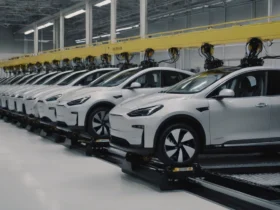
In the rapidly evolving world of technology, generative AI is not just a buzzword but a revolutionary force reshaping how businesses operate. Microsoft’s Copilot, a suite of AI technologies, is a prime example of this transformation. As we delve deeper into the capabilities and potential of these technologies, it’s evident that they are more than just tools; they are game-changers in a digital era.
Understanding the Impact of Microsoft’s Copilot on Business Dynamics: A Deep Dive into Its Revolutionary Offerings
The introduction of Copilot by Microsoft has been a topic of much interest in the tech community. With predictions of generating substantial annual revenue by 2026, it’s clear that Copilot is not just another AI tool; it’s set to become a cornerstone in the tech industry. Despite its complex rollout, its adoption by a significant portion of Fortune 100 companies speaks volumes about its potential and effectiveness.
At the heart of Copilot’s appeal is its diverse range of applications. During Microsoft Ignite 2023, the unveiling of new Copilot offerings across various software and services highlighted its versatility. From Azure to Dynamics 365 Guides, Copilot is weaving its way into multiple facets of the digital workspace. The launch of Copilot Studio further cements its position as a pivotal tool for integrating AI into everyday tasks.
Copilot for Azure stands out as a significant development in cloud computing. By offering a chat-driven assistant for cloud customers, it simplifies complex tasks such as configuration and troubleshooting. Its integration into the Azure platform provides IT teams with an intuitive and efficient way to manage their cloud resources.
What sets Copilot for Azure apart is its use of large language models (LLMs) to provide tailored solutions. By pulling knowledge from technical documentation and individual setups, it offers personalized recommendations and insights. This AI-driven approach allows for a deeper understanding of user needs and more effective problem-solving.

However, the reliance on AI also brings up questions of reliability and trustworthiness. While generative AI can be prone to errors, the ability of Copilot in Azure to explain its reasoning and recommendations provides a layer of transparency and reassurance. This feature is crucial in building user confidence and ensuring the successful adoption of AI technologies in sensitive areas like cloud computing.
The potential use cases for Copilot for Azure are extensive. From designing and operating to troubleshooting and optimizing, it offers a comprehensive suite of tools for managing various aspects of the cloud environment. With its growing user base and continuous skill development, Copilot for Azure is poised to become an indispensable asset for cloud computing.
Moving beyond Azure, Copilot for Service represents a leap in customer service technology. Designed specifically for customer service scenarios, it seamlessly integrates with customer relationship management (CRM) systems. This integration demonstrates the versatility of Copilot and its ability to adapt to different business needs.
As businesses continue to explore the possibilities of AI-driven processes, tools like Copilot are becoming increasingly vital. They not only offer practical solutions but also open up new avenues for innovation and efficiency. In this context, PaperOffice, as an AI-driven problem solver, stands out for its ability to streamline document management processes. Its integration into business workflows showcases how AI can effectively address everyday challenges.
The rise of AI technologies like Copilot and PaperOffice is not just a trend; it’s a paradigm shift in how we approach business processes. By automating routine tasks and providing intelligent insights, these tools are not only enhancing productivity but also reshaping the future of work.
As we move forward, the question is no longer about whether AI will play a significant role in business but how quickly we can adapt and integrate these technologies into our daily operations. The future is here, and it’s powered by AI.






Leave a Review